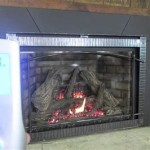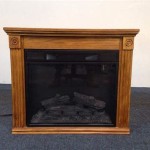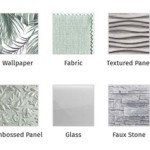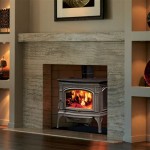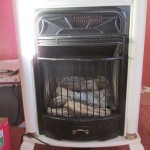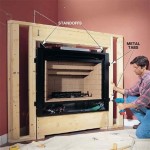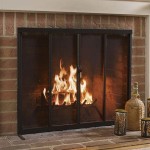Sealing Slate Fireplace Surround: A Comprehensive Guide
Slate, a metamorphic rock formed from shale or mudstone under intense pressure and heat, is a popular choice for fireplace surrounds due to its durability, natural beauty, and heat resistance. However, like any natural stone, slate is porous and susceptible to staining, water damage, and fading over time. Sealing a slate fireplace surround is crucial to protect its integrity and maintain its aesthetic appeal for years to come. This article provides a comprehensive guide to understanding the importance of sealing, selecting appropriate sealants, and the process involved in sealing a slate fireplace surround.
Why Seal Slate Fireplace Surround?
Slate, while dense, possesses a degree of porosity. This porosity makes it vulnerable to absorbing liquids, oils, and other substances that can cause unsightly stains. A fireplace surround, being a focal point in a room, is especially susceptible to spills and splashes. Without a protective sealant, these spills can penetrate the slate, leading to permanent discoloration. Furthermore, moisture absorption can lead to freeze-thaw damage in colder climates, causing the slate to crack or flake over time. Sealing creates a barrier that prevents these issues, extending the lifespan of the slate and preserving its natural beauty. The sealant also makes the surface easier to clean, reducing the effort required to maintain its pristine condition. Regular sealing can also help to prevent the growth of mold and mildew, particularly in areas prone to humidity.
Moreover, unsealed slate can be more susceptible to fading from prolonged exposure to sunlight or heat. Sealants often contain UV inhibitors that help to protect the stone's color and prevent it from becoming dull or washed out. In the context of a fireplace surround, which is exposed to both heat and potentially direct sunlight, this protective quality is especially valuable.
Finally, sealing can enhance the natural color variations and textures inherent in slate. Certain sealants are designed to deepen the color and bring out the stone's inherent beauty, adding to the overall aesthetic appeal of the fireplace. By sealing, one is not only protecting the slate but also accentuating its natural charm.
Choosing the Right Sealant for Slate
Selecting the appropriate sealant is a critical step in the sealing process. There are several types of sealants available, each with its own strengths and weaknesses. The primary categories of sealants for slate are penetrating sealants and surface sealants.
Penetrating sealants, also known as impregnating sealants, work by penetrating the pores of the slate and creating a hydrophobic barrier from within. These sealants do not alter the surface appearance of the slate significantly, maintaining its natural texture and slip resistance. They are ideal for applications where a natural look is desired and where slip resistance is important. Penetrating sealants are typically more durable and longer-lasting than surface sealants, as they are less susceptible to wear and tear from foot traffic or cleaning.
Surface sealants, on the other hand, create a film on the surface of the slate. These sealants can offer a higher level of protection against stains and water damage, and they can also enhance the color and sheen of the slate. However, surface sealants can make the surface more slippery and may require more frequent reapplication as they are prone to scratching and wear. They are also more likely to alter the natural appearance of the slate, which may not be desirable for all applications.
When choosing a sealant, it is essential to consider the specific type of slate used in the fireplace surround. Some slates are denser than others and may require a sealant with a smaller molecular size to penetrate effectively. It is also important to read the product label carefully and choose a sealant that is specifically designed for use on slate. Look for sealants that are water-based, low-VOC (volatile organic compounds), and suitable for use around fireplaces. Always test the sealant in an inconspicuous area before applying it to the entire surface to ensure that it provides the desired appearance and protection.
The Sealing Process: A Step-by-Step Guide
The sealing process involves several key steps to ensure optimal protection and appearance of the slate fireplace surround. The process must be carried out with precision and attention to detail for the best results.
First, the surface must be thoroughly cleaned. Remove any dust, dirt, debris, or existing stains from the slate. Use a pH-neutral cleaner specifically designed for natural stone to avoid damaging the surface. Rinse the surface thoroughly with clean water and allow it to dry completely. The slate must be completely dry before applying the sealant, as any moisture trapped beneath the sealant can lead to problems such as blistering or peeling.
Next, apply the sealant according to the manufacturer's instructions. Most sealants can be applied with a brush, roller, or sprayer. Apply a thin, even coat of sealant, being careful not to over-saturate the surface. Over-application can lead to a sticky or uneven finish. Pay particular attention to edges and corners, ensuring that they are adequately sealed. Allow the sealant to penetrate the slate for the recommended dwell time, as specified by the manufacturer. This dwell time allows the sealant to properly absorb into the pores of the stone.
After the dwell time has elapsed, remove any excess sealant from the surface with a clean, dry cloth. This is a crucial step to prevent a hazy or sticky residue from forming. Allow the sealant to cure completely according to the manufacturer's instructions. Curing times can vary from a few hours to several days, depending on the type of sealant used. Avoid using the fireplace until the sealant is fully cured. Apply a second coat of sealant, if recommended by the manufacturer, following the same procedure as the first coat. Multiple coats can provide enhanced protection and increase the lifespan of the sealant.
Finally, maintain the sealed slate fireplace surround by cleaning it regularly with a pH-neutral cleaner and re-sealing it as needed. The frequency of re-sealing will depend on the type of sealant used, the amount of traffic the area receives, and the level of exposure to spills and stains. A general guideline is to re-seal every one to three years, or as needed, to maintain optimal protection.

Tiling A Fireplace In Oyster Slate Stone Cleaning And Polishing Tips For Floors

Sealing Split Stone Natural Edge Hearth

Tackling A Urine Stained Slate Fireplace Hearth In Boars Hill Oxfordshire Tile Doctor
Slate Tile For Fireplace Surround Ceramic Advice Forums John Bridge

How To Maintain A Slate Hearth Victorian Fireplace

Diy How To Make Your Fireplace Slate Surround Hearth Shine Like New Again With Tung Oil

Slate Fireplace Installation Guide Tile Tiling

Tiling A New Fireplace In Oyster Slate Stone Cleaning And Maintenance

How To Polish Clean A Natural Slate Hearth Top Tip Cleaning Polishing Life

How To Pick The Best Stone For Fireplaces Stoneworx
Related Posts

